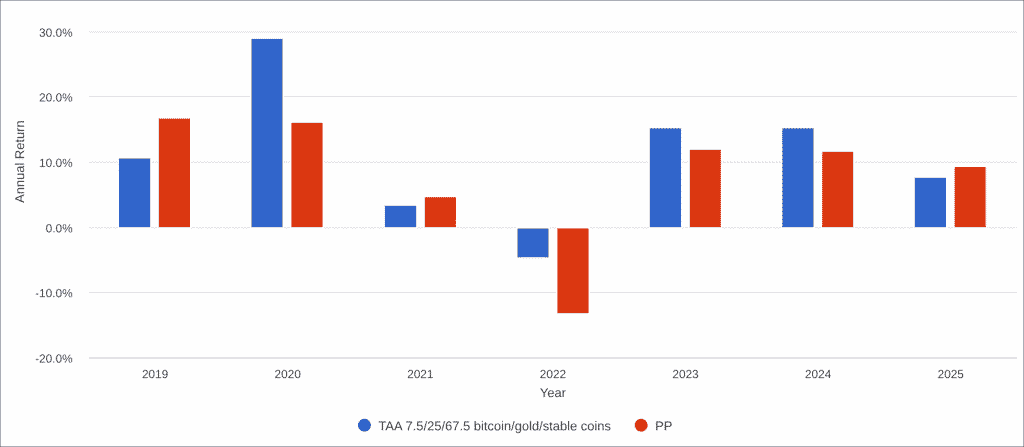mathjak107 wrote: ↑Thu Jul 10, 2025 3:02 am
pretty much that the pp flaw is it bets equal amounts of dollars on anything but equal amounts of risk playing out .
deflation being the last likely and prosperity being the most likely
markets are up 2/3’s of the time typically.
for more than the last two decades we have had gold beating bonds …
equity and gold has beaten equity and bonds over just about every time frame.
it seems what’s been good for bonds has been better for gold .
i will dabble in long term bonds as a trading vehicle because they have been fairly consistent at cycling up a day and then down but i dont see them in today’s world which is quite inflationary and getting worse
###

**7-Point Summary of *Deep Risk* – William Bernstein**
1. **Deep Risk vs. Shallow Risk**
* *Shallow risk* is temporary volatility — price fluctuations that recover over time.
* *Deep risk* refers to **permanent loss of capital** caused by events like war, hyperinflation, confiscation, or deflationary collapse.
2. **Four Types of Deep Risk**
Bernstein identifies four main categories of deep risk:
* **Inflation** (erodes real purchasing power)
* **Deflation** (debt defaults and falling asset prices)
* **Confiscation** (government seizure or heavy taxation)
* **Devastation** (war, geopolitical collapse)
3. **Asset Classes Behave Differently Under Each Risk**
* Stocks typically survive inflation and deflation over the long term.
* Gold and real estate hedge against inflation.
* Foreign diversification and hard assets protect against confiscation and devastation.
4. **Global Diversification is Essential**
* Staying invested solely in your home country increases exposure to confiscation and devastation.
* Investing across multiple jurisdictions (especially stable democracies) spreads out deep risk.
5. **Bonds and Cash Offer Limited Deep Risk Protection**
* While useful for shallow risk, fixed-income assets are vulnerable to inflation and currency collapse.
* Long-term inflation can destroy bond returns permanently.
6. **The Investor's Time Horizon Shapes Risk Exposure**
* Over short periods, volatility matters more (shallow risk).
* Over decades, **deep risk becomes the main threat**, especially to retirement and intergenerational wealth.
7. **Strategies to Mitigate Deep Risk**
* Own productive assets (equities, global businesses)
* Hold some inflation hedges (e.g., gold, TIPS)
* Diversify internationally
* Stay educated and avoid over-concentration
* Don’t rely on past performance — build resilience





